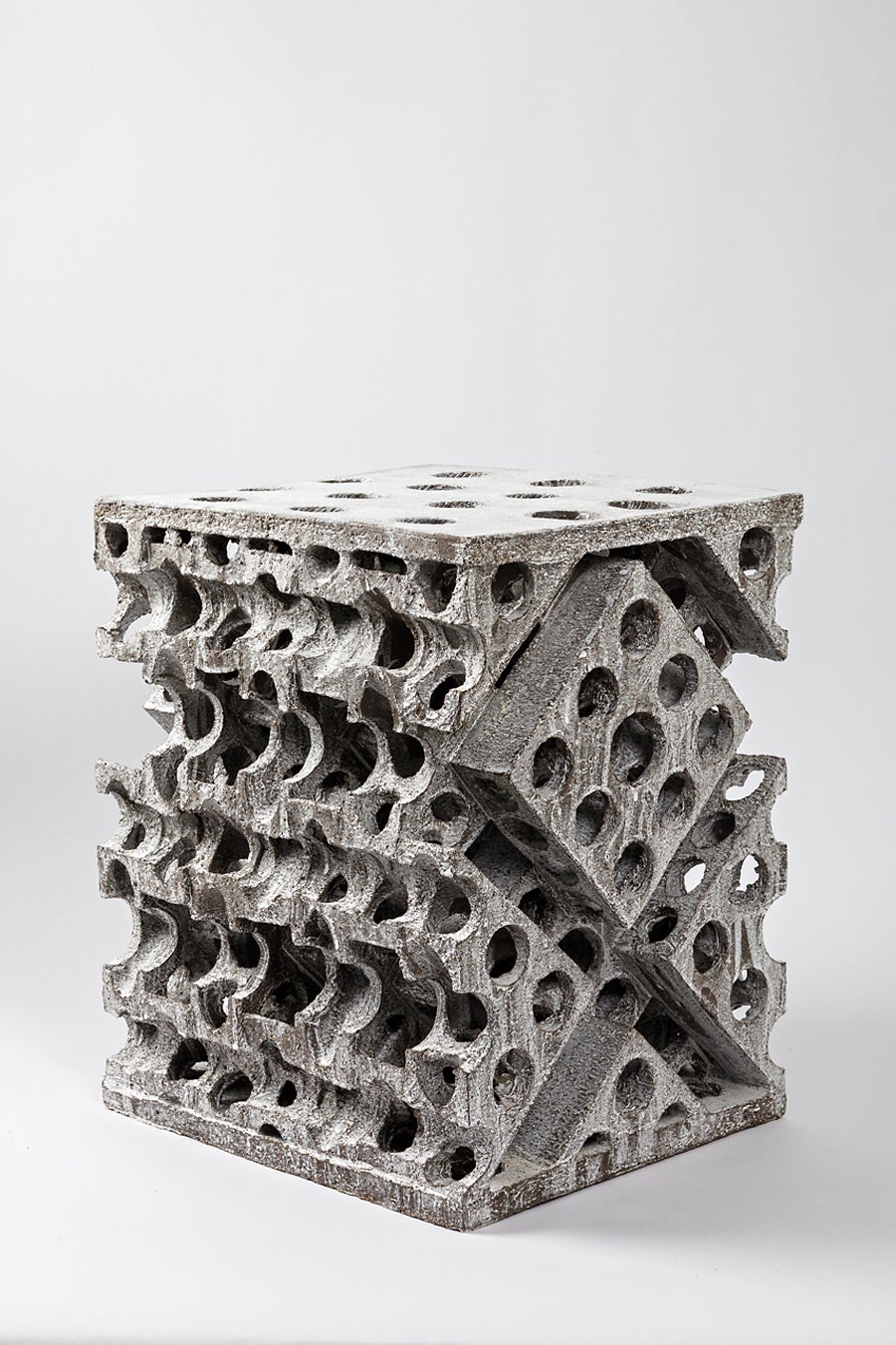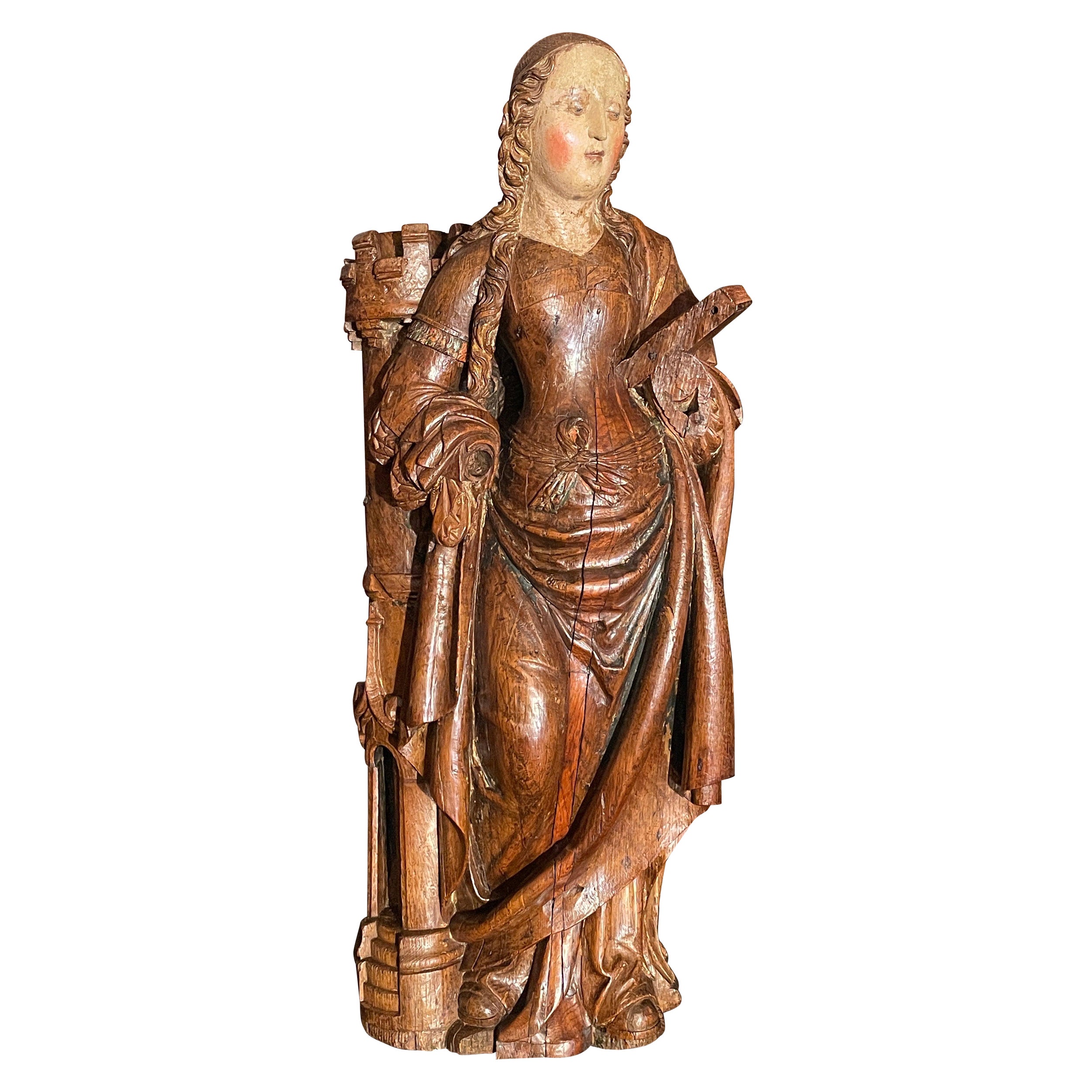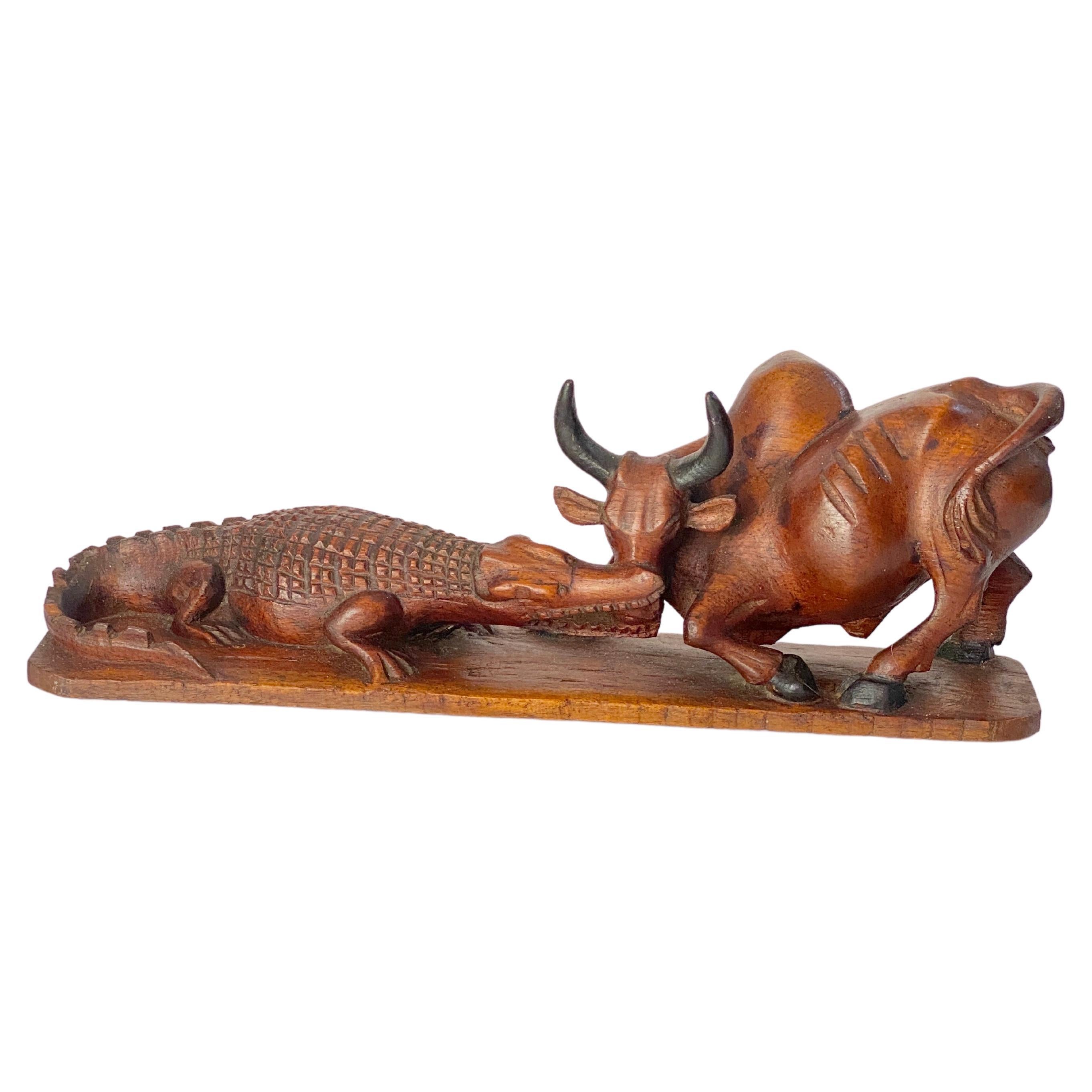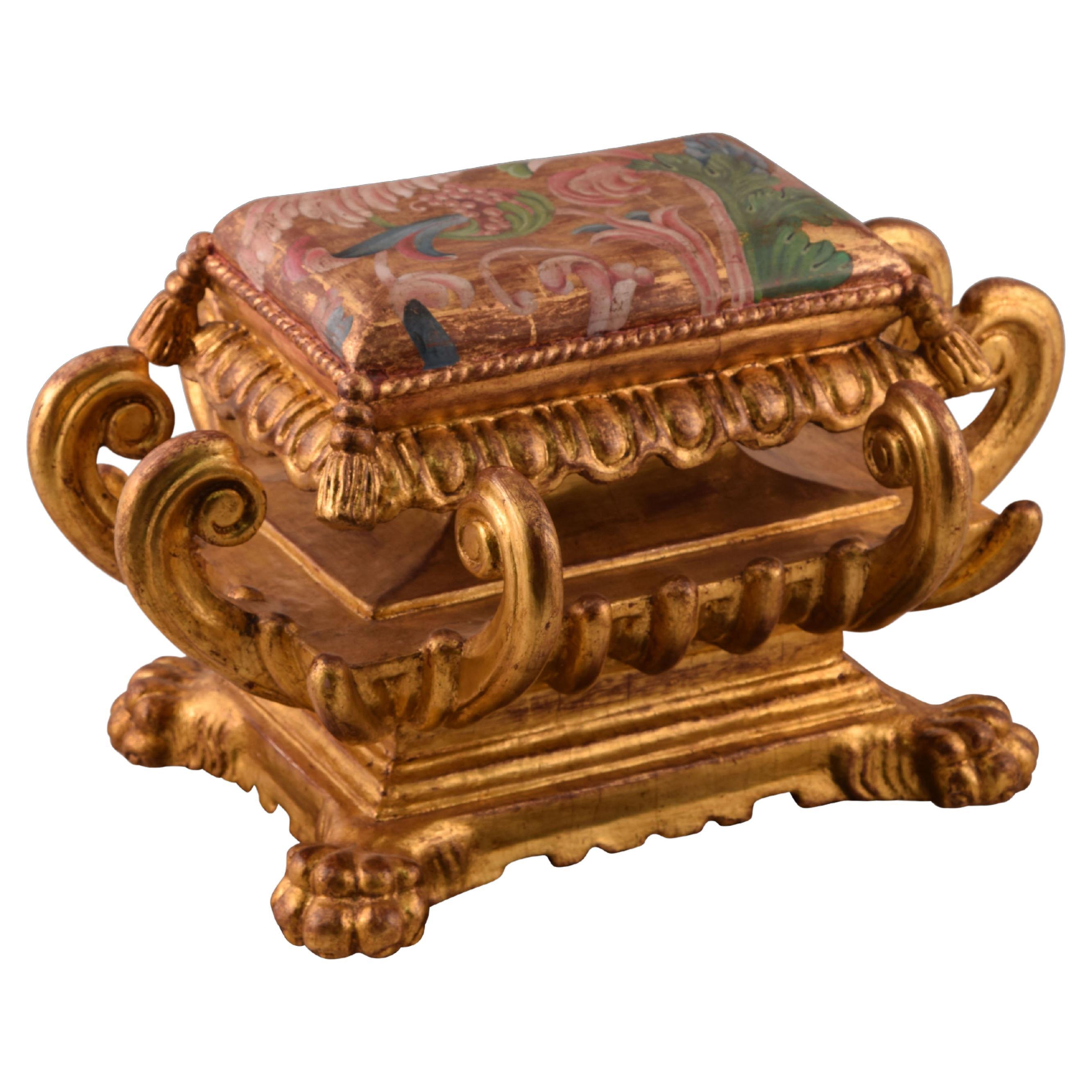Items Similar to Sculpture in Polychrome Wood Representing Saint Anthony Hermit
Want more images or videos?
Request additional images or videos from the seller
1 of 6
Sculpture in Polychrome Wood Representing Saint Anthony Hermit
About the Item
Sculpture In Polychrome Wood Representing Saint Anthony Hermit
Origin : East of France
Period : End of the 15th century
Measures: Height : 97 cm
Width : 32 cm
Depth : 26 cm
Polychrome wood
The saint is represented by an old, bearded man, dressed in a hooded monk’s habit over the tunic of his religious order. He is stood upright, holding an open book, La Règle des Antonnites, in his right hand. In the other hand, he is holding a staff in the form of the Greek letter tau with a rosary hanging down over it. At his feet lies a pig wearing a small bell around its neck.
He rests on his right leg, whilst the left advances forward as if he were about to start walking. His belted tunic, forming several rectilinear pleats, is covered by a habit which is open only at the waist, therefore revealing these pleats. He is also wearing a hooded scapular over his shoulders.
His thick hair escapes from under a distinctive hat, forming a collection of finely sculpted ringlets. This fine detail is also applied to the four long ringlets of his superb beard, which sit just below the shorter ones of his moustache.
His face is a picture of harmony, with lowered eyes and his small mouth lost amongst the abundance of hair.
At his feet on a pedestal of flames, hinting to the fire of Saint Anthony no doubt, a pig trying to scratch its ear.
Born in 251 in Upper Egypt, he withdrew into solitude at a very young age. He would have been plagued in the desert with extremely diabolical temptations.
He payed a visit to Saint Paul the hermit towards the end of his life. He was the dean of the Thébaïde anchorites, who was miraculously fed by a crow. On the day that Saint Anthony visited, the crow brought two portions of bread in its beak instead of one.
Some time after, having learnt of the death of his venerable brother, Saint Anthony went to bury him with the help of two lions.
The King of Catalonia pleaded to come and exorcise his posessed wife and children. He left Thébaïde for Barcelona. He appeared at the house of the provost André, bringing him a sow in his mouth, a monstrous piglet born without eyes. André wanted to kill it but Anthony stopped him, telling him that the poor beast wanted to ask for healing, as the King had done for his offspring.
He made a sign of the cross on the piglet and it suddenly acquired its sight and the members which it did not have at birth. After which, André, guided by Saint Anthony, exorcised the Queen of Catalonia in the same way whilst she knelt at his feet.
Théophile discovered the body of Saint Anthony wrapped in a palm fibre tunic which he had been given by Saint Paul the Hermit.
In the Red Sea Desert there are two Coptic, IV century, monasteries which stand next to each other, one dedicated to Saint Anthony, the other to Saint Paul the Hermit. They are the oldest monasteries in the Christian world.
The body of the famous hermit was transported to Constantinople and would have been transferred into the abbaye, Saint Antoine-en-Viennois, Dauphine.
The Antonnite Order was a charitable order which specialised in treating contagious diseases. The fire of Saint Anthony, was identified by doctors as a grangrenous ergotism, caused by a diet of rye bread contaminated with the parasite ergot. The effect of this is the drying out of hands and feet which then need amputation, the plague and then later syphilis. All the skin diseases came from Saint Anthony.
Saint Anthony’s pilgrimage to Dauphine rivaled that of Saint Jacques to Compostela. Thanks to the various commanderies created by the mother house, Saint Anthony’s cult spread throughout Christianity.
In order to maintain commanderies and their hospitals, the Antonnites resorted to pig farming. They enjoyed having the benefit of letting their pigs roam freely through the streets of the villages, with little bells round their necks that had a recognisable chime so that they were able to find them. This privilege was very envied by other monastic Orders.
Saint Anthony was the patron saint of several crafts such as basket makers and gravediggers.
However it is to the pig that he owes the majority of his patronages; pigkeepers, pig sellers, butchers, porc butchers, brush makers who use pig bristle and bell-ringers because of the pig bells.
This sculpture is is very good condition.
- Dimensions:Height: 38.19 in (97 cm)Width: 12.6 in (32 cm)Depth: 10.24 in (26 cm)
- Materials and Techniques:
- Period:
- Date of Manufacture:End of the 15th Century
- Condition:
- Seller Location:Saint-Ouen, FR
- Reference Number:1stDibs: LU3115329556612

About the Seller
5.0
Vetted Seller
These experienced sellers undergo a comprehensive evaluation by our team of in-house experts.
Established in 2016
1stDibs seller since 2017
160 sales on 1stDibs
Typical response time: 8 hours
- ShippingRetrieving quote...Ships From: Saint-Ouen, France
- Return PolicyThis item cannot be returned.
More From This SellerView All
- Saint Woman in polychrome carved woodLocated in Saint-Ouen, FRSAINT WOMAN IN POLYCHROME CARVED WOOD ORIGIN : ITALY PERIOD : late 13th century Height : 103 cm Length : 28 cm Width : 16 cm Remains of polychromy ...Category
Antique 15th Century and Earlier Italian Gothic Figurative Sculptures
MaterialsSoftwood
- Important Sculpture Representing Saint BarbaraLocated in Saint-Ouen, FRIMPORTANT WOOD SCULPTURE REPRESENTING SAINT BARBARA ORIGIN : NORTHERN FRANCE OR FLANDERS PERIOD : 16th CENTURY Height: 103 cm Length: 40 cm Depth: 30 cm Oak wood Good condition Saint Barbara was the daughter of Dioscorus who imprisonned her in a tower to prevent her from being corrupted by Christianity. Despite this, she was taught and baptisted by a local priest. According to legend, she proved her faith by carving a third window into the tower, symbolic of the Trinity. Once her father learned this, he threatened her with his sword. She managed to escape and hide, not before being revealed by a sheperd. She was thrown in jail and tortured, refusing to denounce her faith. Her father forced her up to the mountain’s summit and decapitated her, afterwhich God struck him down by lightning. Saint Barbara`s following was popularized in the Occident in the 13th century because of the Golden Legend...Category
Antique 16th Century Figurative Sculptures
MaterialsOak
- Carved Polychrome Wood Depicting Saint FlorianLocated in Saint-Ouen, FRCARVED POLYCHROME WOOD DEPICTING SAINT FLORIAN ORIGIN : SWABIA, SOUTHERN GERMANY PERIOD : LATE 15th CENTURY Height : 98 cm Length : 29 cm Depth : 24 cm Polychrome limewood Very fine condition Provenance - Swiss collection STAEHELIN-PARAVICINI - March 1939 - Auction Jacob Hecht -18 April 1929, Berlin - Sammlung Prof Q.A. LEIMHAAS Munich, Helbing - 26 May 1908 (Research by Thierry Fraslin) During the Middle-Age Saint Florian was particularly popular, subject to worship in Austria -Tyrol- Bavaria and Bohemia. Embodying courage and commitment Saint Florian was invoked to protect the soul of the living against sins and to keep the soul of the deads from the purgatory. From the mid-15th century he safeguards from water and fire. The legend has it that when he was young the saint had contained the fire of a burning...Category
Antique 15th Century and Earlier Figurative Sculptures
MaterialsWood
- Important Wood Sculpture, Gothic Depiction of Saint WenceslausLocated in Saint-Ouen, FRIMPORTANT WOOD SCULPTURE, GOTHIC DEPICTION OF SAINT WENCESLAUS ORIGIN : CENTRAL EUROPE PERIOD : MID-15th CENTURY Height : 83 cm Length : 30 cm Depth : 20 cm Basswood Good condit...Category
Antique 15th Century and Earlier Figurative Sculptures
MaterialsWood
- Carved Wood Depicting Saint MartinLocated in Saint-Ouen, FRCarved wood depicting saint martin Origin : Germany Period : 15th century Measure: Height : 85 cm Wood Polychrome remains Good state of conservation Collection number on the back 26757 Our partially polychromed Saint...Category
Antique 15th Century and Earlier Figurative Sculptures
MaterialsWood
- Important 15th Century Polychrome Wood Virgin and ChildLocated in Saint-Ouen, FRImportant 15th century polychrome wood virgin and child Origin: Southern Germany Period: Late 15th Century, Ca. 1480-1490 Height : 125 cm Polychrome limewood Good condition Provenance : Private collection, Alsace, France. As soon as 1430, sculpture starts a major and deep stylistic evolution than will unfold over a century, until around 1530. We call it the International Gothic. This production is particularly interested in a quest for realism. This important Virgin and Child wears a long red dress with a round gilded neckline. A delicate golden belt...Category
Antique 15th Century and Earlier Figurative Sculptures
MaterialsWood
You May Also Like
- Friar (St. Anthony), polychrome and gilded wood sculpture, 16th centuryLocated in Brescia, ITFriar (St. Anthony), polychrome and gilded wood sculpture, 16th century St. Anthony standing, caught in the act of preaching. Talar dress consisting of a tunic decorated in gold,...Category
Antique 16th Century Italian Renaissance Figurative Sculptures
MaterialsWood
- Wood Sculpture Representing a Crocodile and a Bull Fighting, in Wood France 1930Located in Auribeau sur Siagne, FRWood Sculpture representing a Crocodile and a bull fighting. The item is in Wood, with an old Patina, in Brown color. It has been made in France circa 1930.Category
Vintage 1930s French Animal Sculptures
MaterialsWood
- Base for sculpture. Polychromed wood.Located in Madrid, ESGallon base. Carved and polychrome wood. Inspired by models from the 17th century. Rectangular base with a similar cushion on the top (decorated with plant elements) and complex line...Category
21st Century and Contemporary Spanish Baroque Figurative Sculptures
MaterialsOther
- 16th century polychrome wood sculptureLocated in Firenze, ITImportant 16th-century polychrome and gilded wood carving depicting Saint, Italy. The work features exceptional gilding on the dress and hair. Extremely important is the size of th...Category
Antique 16th Century Italian Figurative Sculptures
MaterialsWood
- Natural size pair of african sculptures in noble wood representing giraffesLocated in Rio De Janeiro, RJIncredible and huge sculptures representing a couple of giraffes polychromed. Fantastic.Category
Vintage 1950s Kenyan International Style Animal Sculptures
MaterialsWood
- Two Saints In Polychrome Wood, Portugal, 17th Century, human-sizedLocated in Honnelles, WHTTwo Saints In Polychrome Wood, Portugal, 17th Century Size 1:1Category
Antique 17th Century Portuguese Louis XIII Figurative Sculptures
MaterialsWood
Recently Viewed
View AllMore Ways To Browse
Antique Woods Of La
Four Saints
Antique Wood Saint
Dress Form Wood
Wood Lions Feet
Decorative Book Cover
Antique Small Bell
Antique Small Bells
Antique Hat Forms
Old Wood Cross
Wood Picture Stand
Lying Down Sculpture
15th Saint
Queen Of Egypt
Religious Saint Sculpture
Pedestals Wood Old
King And Queen Decorative
Polychrome Saint





